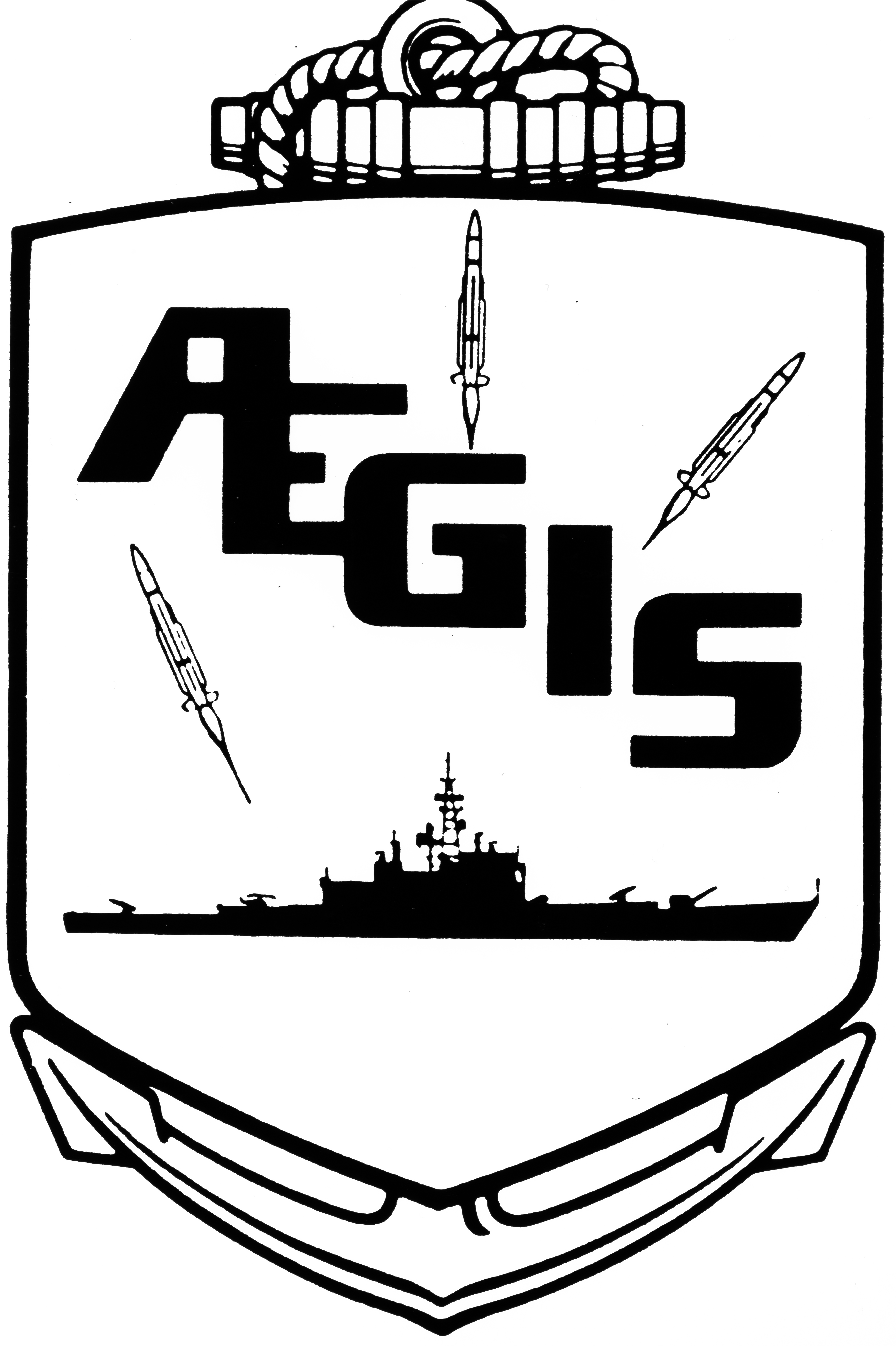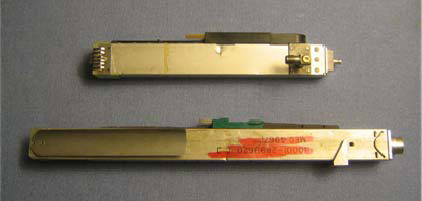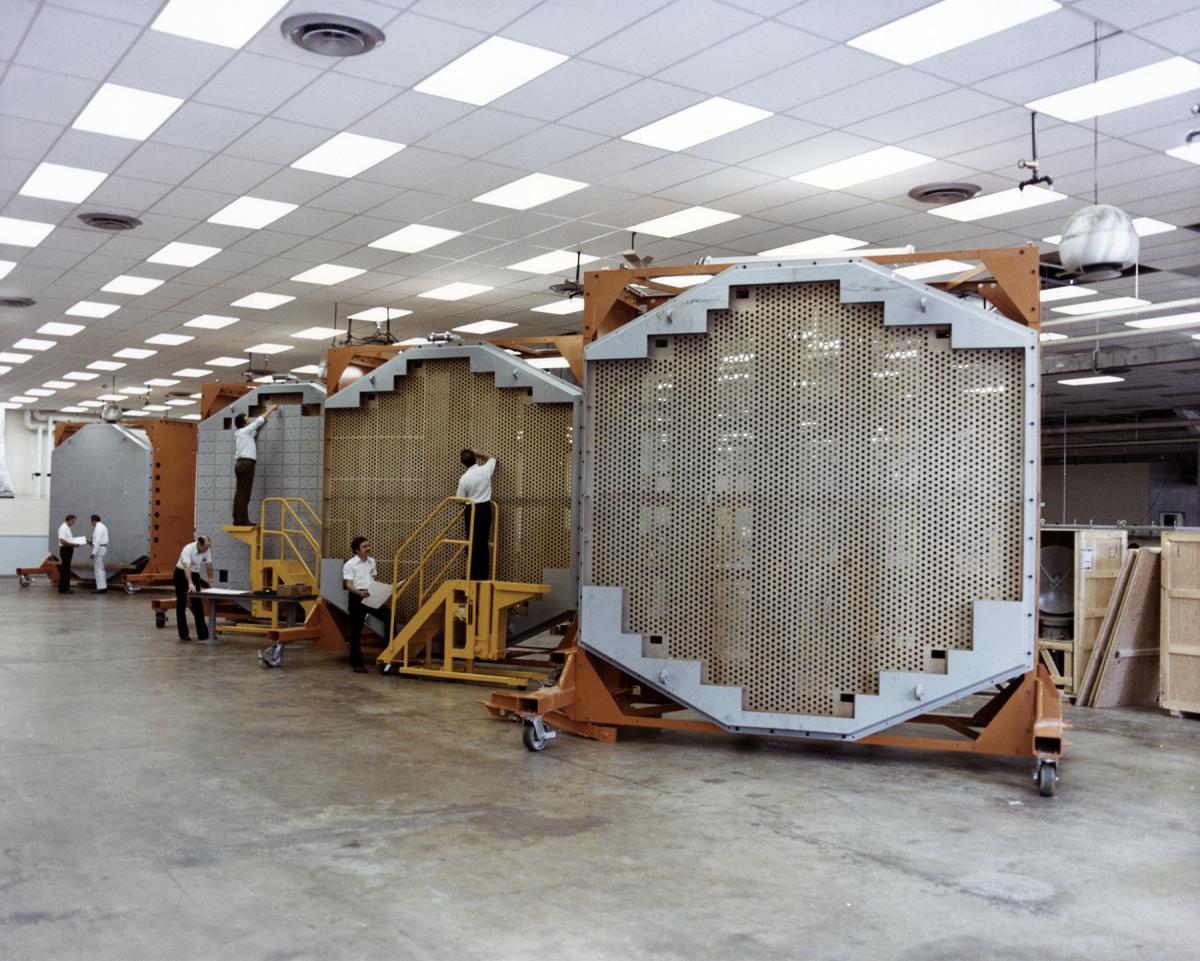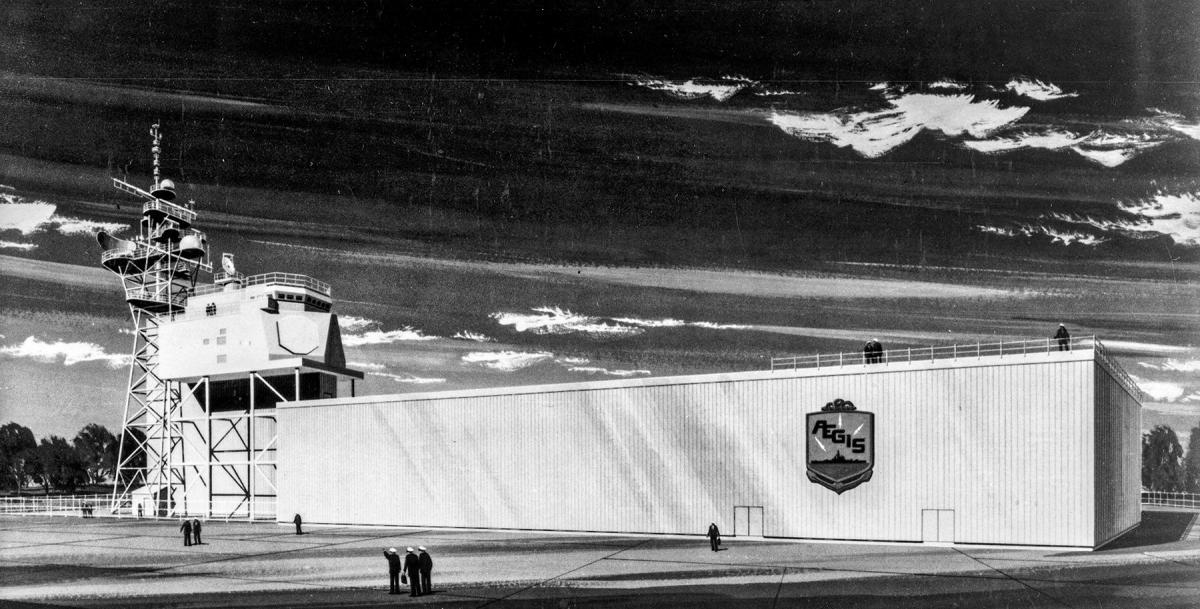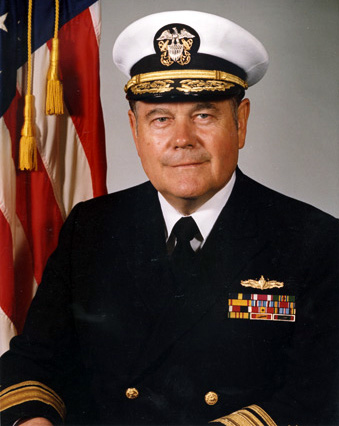
Meyer, Wayne E., Rear Adm., USN (Ret.)
(1926–2009)
Admiral Meyer is known as the “Father of Aegis,” the revolutionary combat system now standard in U.S. Navy surface warships for air and missile defense. Meyer grew up during the Depression on a farm near Brunswick, Missouri. He enlisted in 1943 when he was 17 years old and was commissioned through the Naval Reserve V-12 officer training program at the University of Kansas. His initial assignment as an ensign was to begin his postgraduate education at the Massachusetts Institute of Technology (MIT). His first tours of sea duty were in the destroyer Goodrich (DD-831), 1947–48; the light cruiser Springfield (CL-66), in 1948–49; and the destroyer tender Sierra (AD-18), 1950–51. In 1951–52 he attended Guided Missile School at Fort Bliss, Texas, and from 1952 to 1954 taught at the Nuclear Weapons School in Norfolk, Virginia.
After being a student at General Line School, Monterey, California, in 1954–55, Meyer served in 1955–56 as executive officer of the radar picket destroyer escort Strickland (DER-324) and 1956–58 on the staff of Commander Destroyer Force Atlantic Fleet (DesLant). He attended the Naval Postgraduate School, 1958–60, and did further postgraduate work at MIT, 1960–61. His final shipboard tour was in 1961–63 as fire control officer and weapons officer in the guided missile cruiser Galveston (CLG-3). From there he reported to the Surface Missile Systems Project in Washington, D.C., 1963–67, and served 1967–70 at the Navy Surface Missile Systems Engineering Station (NSMSES), Port Hueneme, California.
RADM Meyer's longest tenure, 1970–83, was in the Advanced Surface Missile System, which became Aegis. From 1976 to 1983 he was project manager for the Aegis Shipbuilding Project in the Naval Sea Systems Command. His final tour of active duty, 1983–85, was as NavSea-06, Deputy Commander for Weapons and Combat Systems. Following retirement from active naval service, he continued to work in Aegis-related activities.
“Aegis to Sea, Aegis to Sea, Aegis to Sea”
In this audio clip from his oral history, Rear Admiral Meyer provides a behind-the-scenes view of the technical challenges, and the dedicated personnel, that attended the birth of the fleet-transformative Aegis combat system.
Paul Stillwell: You talked before about the guiding star on the horizon that you were moving for. In the early ’70s did you have a timetable for when you would get to that star?
Admiral Meyer: We had attached to that star in those days. Very early on, I think no later than ‘71, somewhere in there, we created the slogan: “Aegis to sea, Aegis to sea, Aegis to sea.” And while the original big engineering development contract, Air Force style, called for three big engineering development models and a brand-new missile and a brand-new launcher, none of those were meant to be, because when you finally had to sober up and get around to reconciling the money and stuff, it couldn’t be done. Furthermore, it turned out it could be done, if you had the right kind of team and the right kind of attitude and the right kind of products.
And so we decided every bloody week to undertake it. I called it “lifeboat behavior.” We’re all in this lifeboat, and we’ve got the option of trying to save ourselves or saying the hell with it. And I may have mentioned to you, I’ve said it on several occasions, and I brag about it, I’ve never had anybody with me that wasn’t a volunteer. I just refused to have a civil servant or an officer or a vice president in those days that was not a volunteer. I didn’t want anybody else. First of all, they had to believe. Second of all, they were in many respects risking their future if they failed, we failed. I’m proud to say that many, many of them went on to great successful undertakings as a result of the outcome, but it sure didn’t look that way.
We had two power tubes, one with an outfit called S-F-D in New Jersey, and one was the California group for power tubes; I can’t say right now who it is.* And that was the introduction of what came to be known as the introduction of the crossed-field amplifier as a new power tube. It was a tube smaller than this table, much smaller. Actually, it was a 40-pound tube, so one man could handle it. And we got the design down to where each array had 32 power tubes. So two arrays had 64. So four arrays in a ship had 128 power tubes, is how we massed all that power.
We had what we referred to in those days as a trombone section in the deckhouse. If you went and looked in our deckhouse we had this. It would just blow your mind. This was the frequency of S-band, around 3,000 megacycles. And the waveguide for 3,000 megacycles in horizontal is about that wider.†
Paul Stillwell: Four inches, maybe.
Admiral Meyer: Yeah, about four inches. And it’s about 2 inches vertically. Well, we decided that we could get by with half-height waveguide, so we could use, like, less than 2-inch waveguide but still needed the 4 inches to put this waveguide all together. We went to work with big mockups up at Moorestown, because the physical layout was a challenge, a real challenge. How to gang this stuff all together and get it to come out and focus and hit a spot on the array. Magic numbers on this radar, they are all digital: 16, 32, 64, 128. These are all digital numbers, all the powers of two, and for the first time we were doing in a radar design this effort of ganging this power up out of these one-kilowatt tubes and bringing it all together and making it come in phase and focus on you out at 220 miles, and get a detection. It’s stunning. It was just mind-blowing. It is amazing what we have contributed, actually, to the field of engineering in high-powered microwave since then. Patriot was alongside us, but they weren’t dealing in high power. AWACS was alongside us, but they weren’t dealing in high power either.‡ And AWACS was not dealing in fixed arrays.
So the heart of the arrays was this thing here. This is called a ferrite phase shifter. Today we don’t use them anymore. We use digital phase shifters.
Paul Stillwell: It’s about 6 or 7 inches long, maybe.
Admiral Meyer: Right, and maybe weighs half a pound. Each radar in a cruiser has got 16,000 of these in the radar, and 2,000 more for the countermeasures piece, so there are 18,000 of these little mothers in each radar. So right away you’re told that, boy, one of the important things on this is not only its cost but its reliability. And we designed them so that they’re installed in nests. And we originally, because we had so much pressure from the purists and the theorists, that we could sample and determine every single one of these on-line, as to whether it was functioning or not functioning. We don’t do that anymore. Of course, it turned out to not be important then. We operated for several years in Norton Sound with one array which was about better than 4,000 of these, and as far as I know we never had a failure the whole time. They were that good. We put a lot of time on it. We put a hell of a lot of effort on it. The materials in this came from a little outfit up in the Catoctin Mountains here in Maryland. And RCA and Raytheon together, we engineered this thing. The first one of these cost us something like $700.00 apiece. When we got through, by the time we were building Serial 1, we were making them at $40.00 apiece. That’s how much engineering we accomplished.
We chose to have these assembled at that little place, and some of them finally completed in RCA itself — worked closely to supervise it. And I regularly made trips to these places because these things, you can see, originally were pretty darned dainty. They called for a lot of dexterity and skill in their assembly and putting them together. It really was mostly women, far and away women. We had hundreds of them. Their performance really, really mattered. And the rejection rate was very, very costly. We spent a lot of time on that.
We went, on this thing, in the next two years we went from an acceptance rate of something like 40% till by the end we were 98% off the production line.
Paul Stillwell: How did you achieve that?
Admiral Meyer: Well, I told those women it was because of them. But I had engineers in the production department, manufacturing department. I had women in the engineering department — I had them all mixed in there. Put them in a gunnysack and shake them every day. I had sailors with them every bloody day!
I started with two officers and seven sailors at Moorestown when we opened the doors, and I had a couple rules on that. Number one, they had to come in the front door. Number two, they had to wear their uniforms, so that people never forgot what they’re doing. And if you watch the Lockheed Martin slogan today — you know, in their big ads like in the Post and stuff just this weekend — their biggest slogan for a number of years now: “We never forget who we’re working for.” Well, I think that this in recent years came from Captain (retired) Fred Moosally, who had worked for me in another era, and they ended up adopting that slogan for the whole Lockheed Corporation — not the RCA one but the whole Lockheed structure.*
So this thing has any number of parts, and they’ve really knocked the hell out of its cost. Making processes to be able to constantly check it turned out to be unnecessary. We did a lot of unnecessary things. Fear helps a person a lot, because we knew that if we failed they were coming after us; they were going to kill us. These are known as ferrite phase shifters. Well, today in the latest one we’re using what are called digital phase shifters, so they’re a little lighter weight than this. I don’t know what they cost today when they make them. I think we have the same numbers in them. These phase shifters will be there when you and I are in the graveyard. Incredible, just incredible.
And so you look in the back of the array, the radar, there’s nothing to see. You look there and say, “Well, wait a minute, what am I looking at?” Because all you see are the panels that are over all of this, and it’s all hooked together. And you look up above you, and you see all of this waveguide running around, or what we call the trombones — they’re all running around up there — which pipe all this stuff together in its use.
When I took over, there were three engineering development models. By the end-of-the-world speech, there was one. Number two got cancelled before the contract was ever let, and that was to develop a missile. Number three was to refine EDM-1, so number three was to be what you may call pre-production billing.** Never happened. One unit was to go to Desert Ship at White Sands, New Mexico, for long-range testing. Never happened.
Norton Sound did become available. Norton Sound, when I walked in the door, was in a private shipyard in Baltimore. She had parts of the Typhon program in her. She was going to be the designated ship for Aegis.
* S-F-D Laboratories, Union, New Jersey.
† A waveguide is a structure that carries electro-magnetic waves from the source to different parts of a ship.
‡ AWACS - airborne warning and control system. This is an aerial look-down radar and tracking system carried on board the Air Force's E-3 Sentry, a modified Boeing 707 airliner with a rotating radome on top.
** Captain Fred P. Moosally, USN (Ret.), served from 2002 to 2010 as president of Lockheed Martin’s MS2 division, involved with the Navy’s Freedom (LCS-l)-class littoral combat ships and the Coast Guard’s Integrated Deepwater System.
About this Volume
Based on 18 interviews conducted by Paul Stillwell from October 2007 to March 2009, the oral history contains 643 pages of interview transcript plus a comprehensive index. The transcript is copyright 2012 by the U.S. Naval Institute; the interviewee placed no restrictions on its use.




